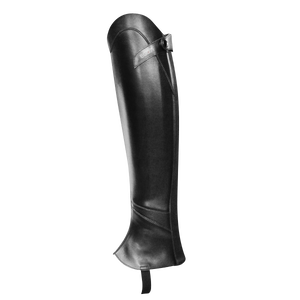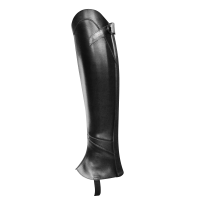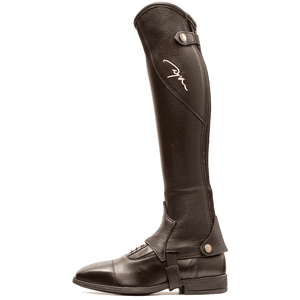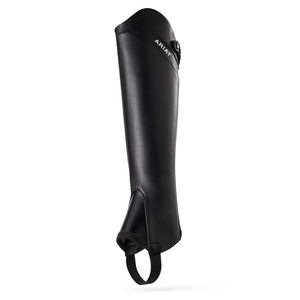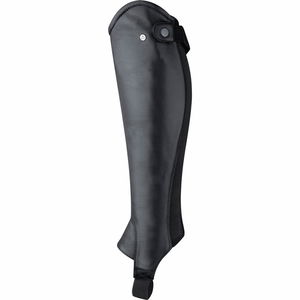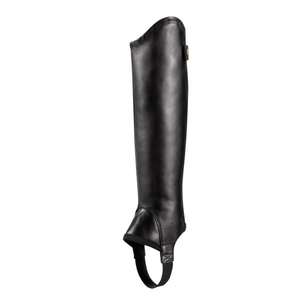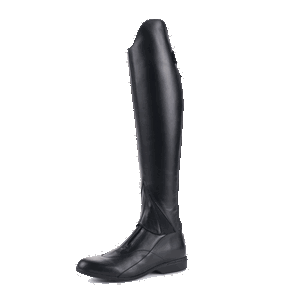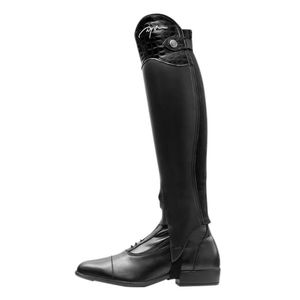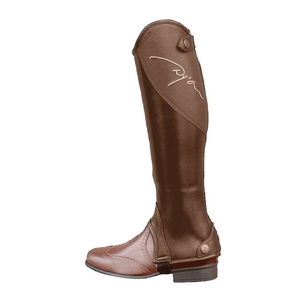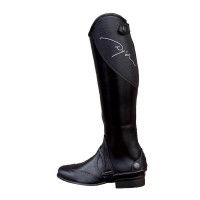Half Chaps (41)
Frequently asked questions about Chaps
One question - many answers. Some prefer riding boots, others chaps. Riding boots are tight on the leg and should be broken in for the best fit. They can be customised and sometimes cost several hundred euros. Chaps, on the other hand, are cheaper and offer more flexibility as they can be put on and taken off quickly. They have a rubber loop that is attached to the sole of the riding boot and can be closed with a zip at the calf.
To fit the chaps ideally to the leg, they are opened and then placed around the foot. The elastic band should be positioned on the sole, directly in front of the heel of the boot. The zip is located either at the back or on the outside of the leg, but never on the inside, as this can cause chafing on the saddle and injure the horse.
Chaps originate from western riding, but have now also established themselves in English riding. They are an alternative to riding boots, but offer more flexibility. Chaps are comfortable to wear and, depending on the rider's preference, can also be worn when working in the stable or grooming the horse. However, it is advisable to wear the chaps only when riding. This protects them and does not strain them further. This also increases their durability.
There are different variants of chaps, from the standard models, to the popular models, up to the high-priced style variants. They are mainly made of various types of artificial leather, genuine leather or nylon. Here it is important that the chaps fit perfectly and do not pinch or sit too wide. Keep in mind that not every calf shape fits every model, so it can be beneficial to have the right measurements taken at a local specialist shop.
At best, chaps should fit like a second skin, but it is important to measure the right size. This requires the length and width of the calf in order to select the right size within the size charts of the chaps. As most people's calves are slimmer in the morning than in the evening, it is advisable to measure the sizes when you are riding. If you mainly wear riding socks, it is advisable to wear them when measuring. This way, they are included in the measurements and there will be no unpleasant surprises if later the chaps are too tight when riding socks are worn.
Many riders wear high riding socks over their riding breeches. They come in a wide variety of patterns, designs and colours. They have a stabilising effect on the heels and are essential for the feel-good factor when riding and working in the stable. The socks are usually resistant and additionally stabilise the riding breeches to prevent slipping. Many riding socks are made of materials that are breathable and quick-drying. Especially for the cold months and low temperatures, there are socks that are thickly padded and provide additional warmth.
It is recommended to wipe off coarse dirt with a damp cloth or to clean with a hard brush. The zips should be cleaned more often to ensure that they close properly at all times. In addition, a zip spray can be used for this purpose. Since horse sweat hardens the leather, leather chaps should be wiped clean after each use. Do not leave the chaps to dry in direct sunlight or near radiators, but in a shady and airy place.


